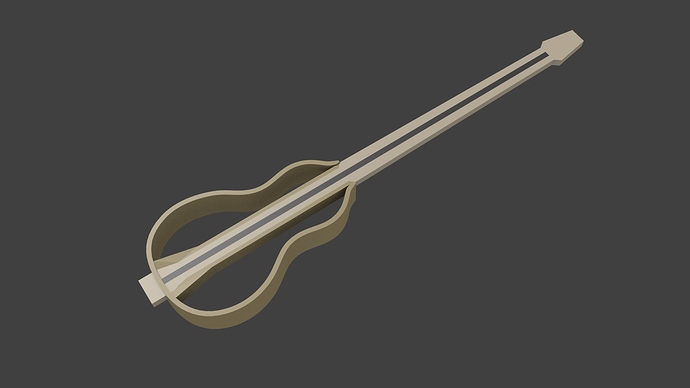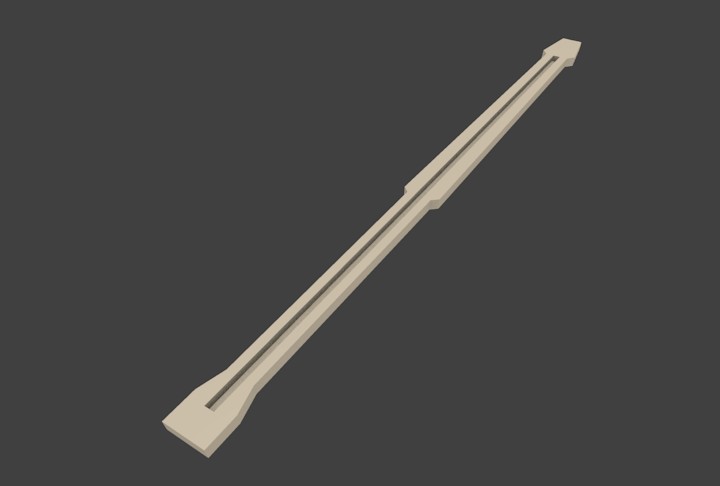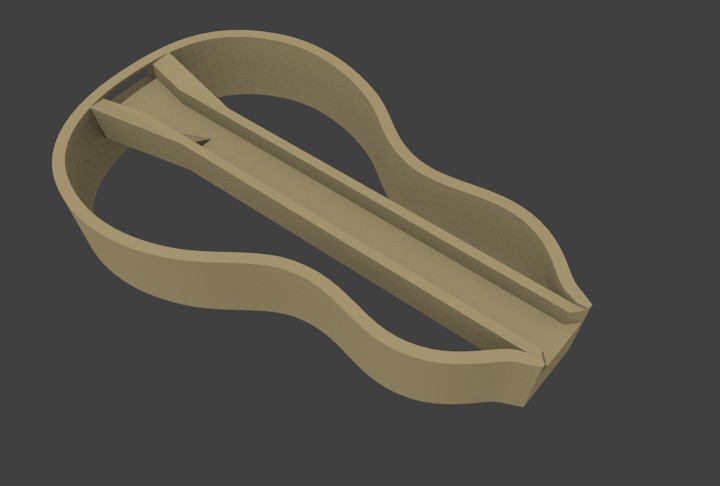I have made a (slightly rough) plan of the instruments shape on Blender. Here is an image of the main body, rear piece of the neck, and a rod for reinforcement. The top and rear panels, as well as the fingerboard, are not shown.
I have some pieces of spruce glued together for the body (although I will redo it with alder if I have to restart), and I will use those two pieces of maple for the rear neck and fingerboard. For the neck reinforement, I will probably use a 1/2" wide square tube of steel, although I might instead choose carbon fibre if I can find somewhere to buy it in the right length (about 1m). I will probably not have any adjustable truss rod, but hopefully it wont be such a problem as this is a fretless instrument.
It’s an unusual design, which is a hybrid of a neck-through and set-in neck. The steel rod going through is inspired by the piano, which has the strings mounted on a very rigid cast iron frame which gives it good sustain. I want to have a piano-like tone on this instrument, so I’m trying to achieve the effect this way.
Here is the body and neck pieces shown separately. Can anyone recomment to me a good way to route a straight channel through both of them, as you can see?
By “your concepts” I figure that you’re refering to those unusual features that I mentioned (water chamber, sand chamber). It would be hard to figure out a way to test how they sound before building most of the instrument, but I might figure out a way to attach these things on temporarily, just for testing.I might omit those from the final instrument. It depends on how much space I have. The idea of the sand chamber is that there’s a rattling noise (resembling like white noise) that occurs whenever the strings are played (especially the lower notes). Are there other ways to achieve a rattling sound that occurs in response to other (lower) vibrations? Maybe if I’m feeling crazy I can put a sizzle cymbal inside.
The lowest open string will probably be tuned to B0 (30.9hz) most of the time. The interval between the three playing strings will be something between a perfect fifth and an octave.


